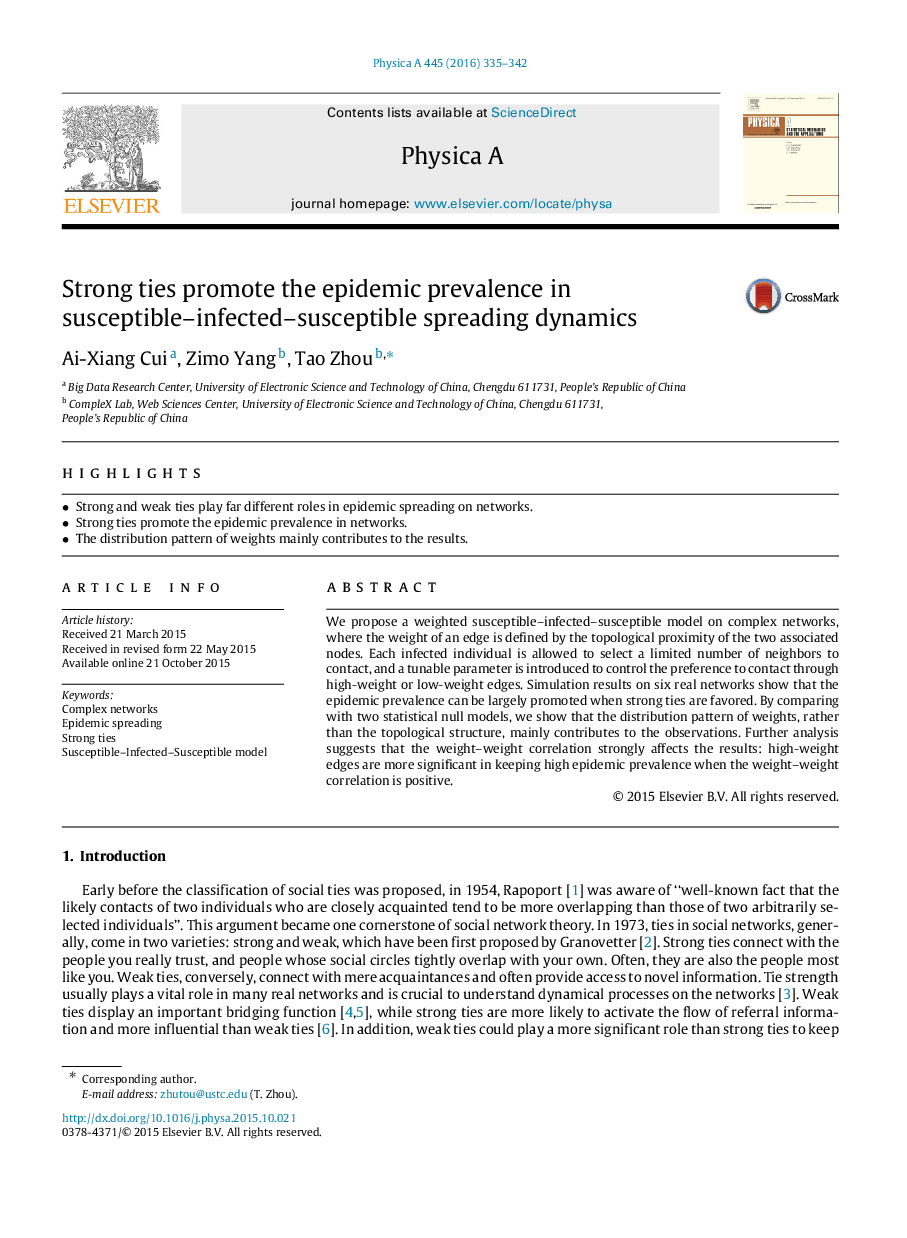| Article ID | Journal | Published Year | Pages | File Type |
|---|---|---|---|---|
| 7378546 | Physica A: Statistical Mechanics and its Applications | 2016 | 8 Pages |
Abstract
We propose a weighted susceptible-infected-susceptible model on complex networks, where the weight of an edge is defined by the topological proximity of the two associated nodes. Each infected individual is allowed to select a limited number of neighbors to contact, and a tunable parameter is introduced to control the preference to contact through high-weight or low-weight edges. Simulation results on six real networks show that the epidemic prevalence can be largely promoted when strong ties are favored. By comparing with two statistical null models, we show that the distribution pattern of weights, rather than the topological structure, mainly contributes to the observations. Further analysis suggests that the weight-weight correlation strongly affects the results: high-weight edges are more significant in keeping high epidemic prevalence when the weight-weight correlation is positive.
Related Topics
Physical Sciences and Engineering
Mathematics
Mathematical Physics
Authors
Ai-Xiang Cui, Zimo Yang, Tao Zhou,
